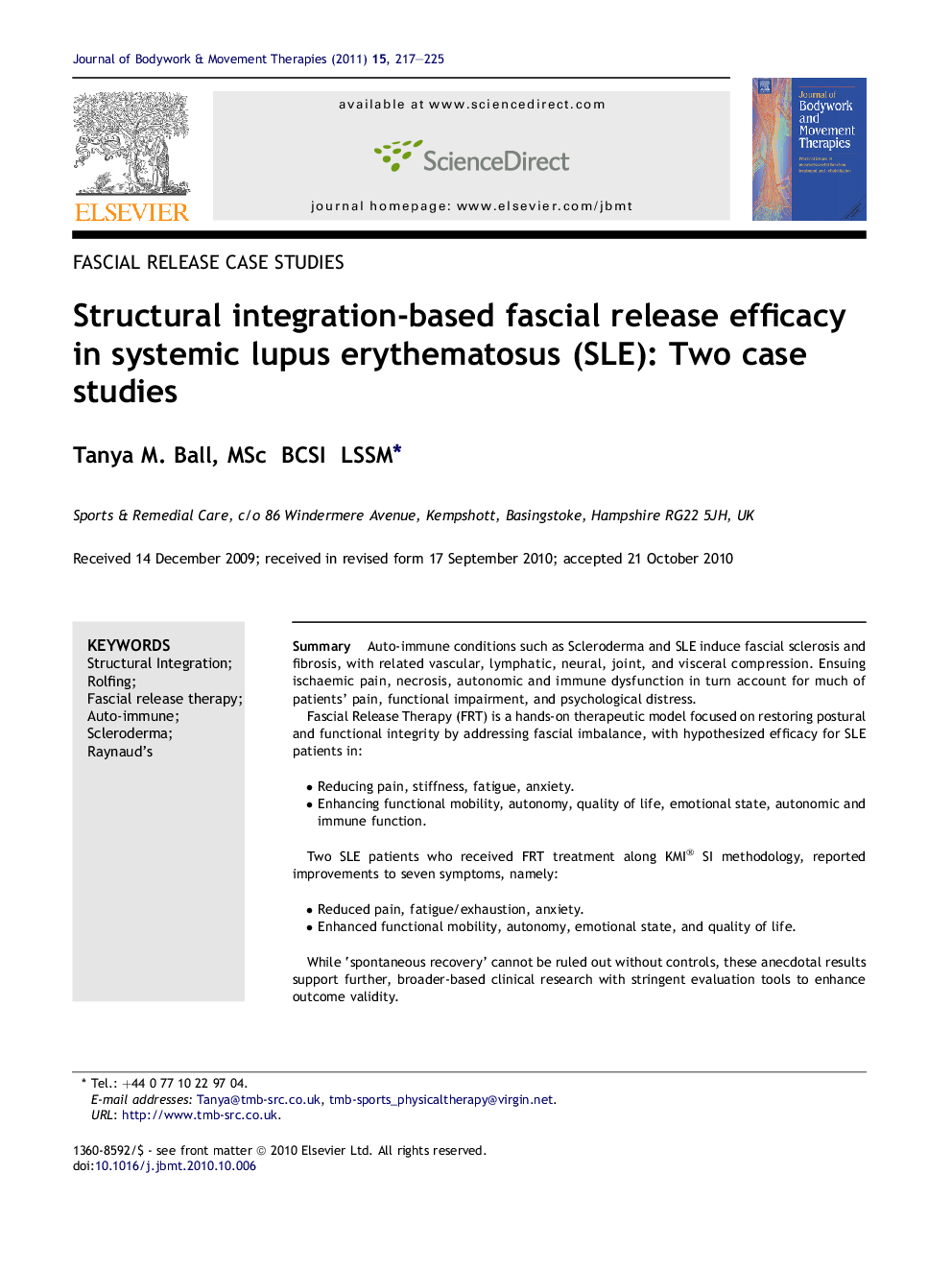| Article ID | Journal | Published Year | Pages | File Type |
|---|---|---|---|---|
| 2619795 | Journal of Bodywork and Movement Therapies | 2011 | 9 Pages |
SummaryAuto-immune conditions such as Scleroderma and SLE induce fascial sclerosis and fibrosis, with related vascular, lymphatic, neural, joint, and visceral compression. Ensuing ischaemic pain, necrosis, autonomic and immune dysfunction in turn account for much of patients’ pain, functional impairment, and psychological distress.Fascial Release Therapy (FRT) is a hands-on therapeutic model focused on restoring postural and functional integrity by addressing fascial imbalance, with hypothesized efficacy for SLE patients in:•Reducing pain, stiffness, fatigue, anxiety.•Enhancing functional mobility, autonomy, quality of life, emotional state, autonomic and immune function.Two SLE patients who received FRT treatment along KMI® SI methodology, reported improvements to seven symptoms, namely:•Reduced pain, fatigue/exhaustion, anxiety.•Enhanced functional mobility, autonomy, emotional state, and quality of life.While ‘spontaneous recovery’ cannot be ruled out without controls, these anecdotal results support further, broader-based clinical research with stringent evaluation tools to enhance outcome validity.Therapeutic mechanisms may includefascial relaxation as key to decreasing myofascial pain; myofibroblast response to ‘stress’; inter- and trans-fascial plane transfer of enhanced ‘ease’ and ‘glide’. Psycho-neuro-immunological factors reversing adverse auto-immune response.
